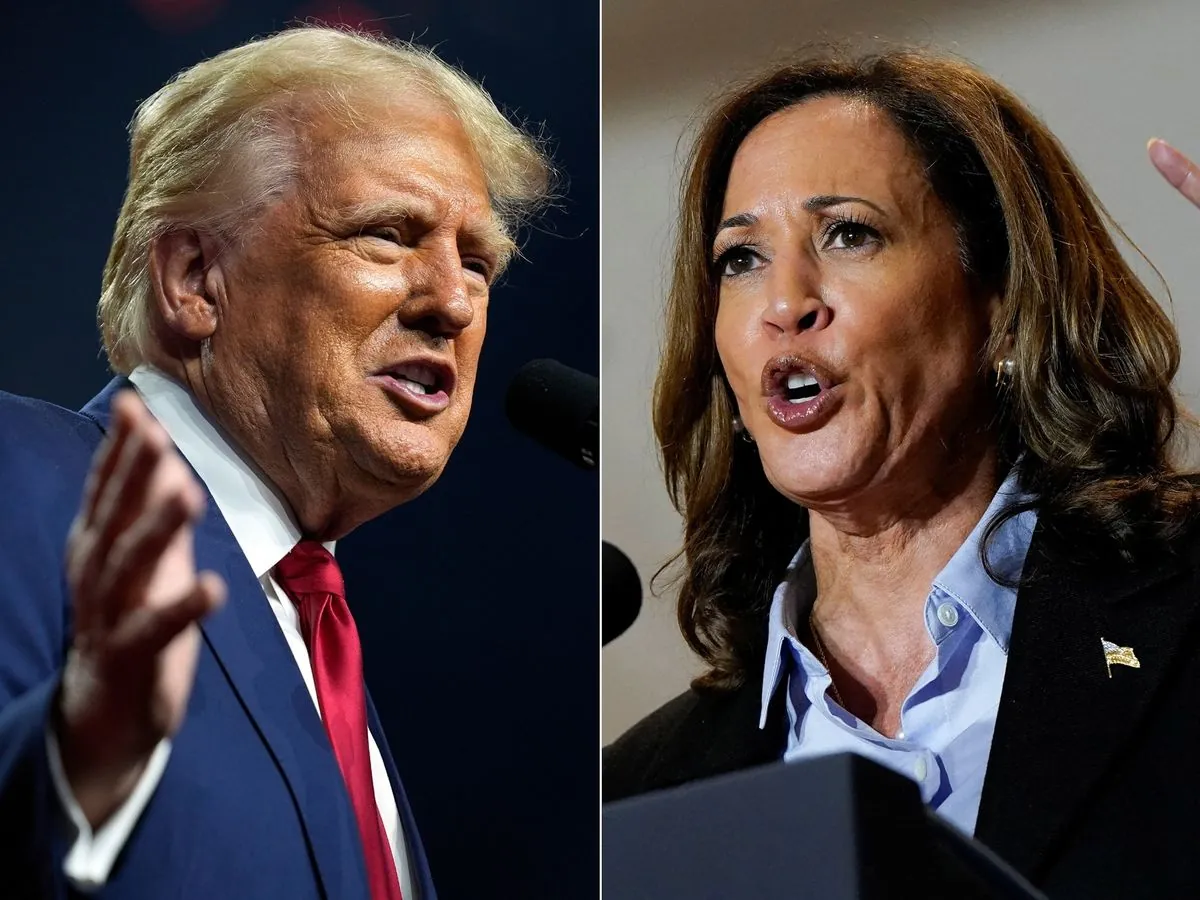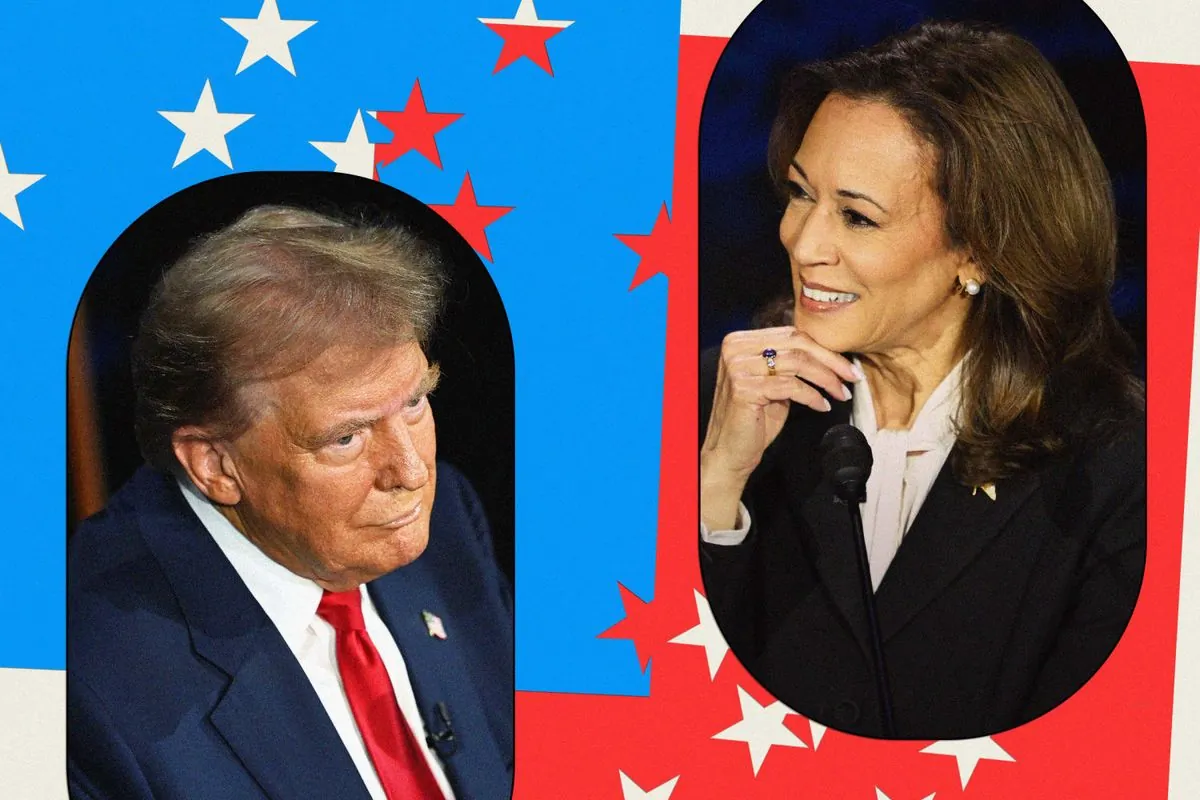Harris and Trump's Contrasting Body Language Steals Spotlight in VP Debate
Vice President Harris and former President Trump showcased stark differences in nonverbal communication during Tuesday's debate. Their contrasting styles, from animated expressions to fixed gazes, captivated viewers.

In a highly anticipated vice presidential debate, Kamala Harris and Donald Trump displayed markedly different nonverbal communication styles, captivating viewers across America. The event, which took place on September 10, 2024, highlighted the candidates' contrasting approaches to body language and facial expressions.
As the debate commenced, Harris took the initiative, walking more than halfway across the stage to offer a handshake to Trump. This gesture, rooted in Western political tradition, set the tone for their first in-person encounter. The handshake, a common greeting that has been part of American political culture since the 19th century, served as a brief moment of civility before the verbal sparring began.
Throughout the debate, Harris exhibited a more animated and reactive demeanor. She frequently turned towards her opponent, maintaining eye contact and displaying a range of expressions. Her reactions included laughter, smiles, and frowns, often in response to Trump's statements. This expressive style is reminiscent of the impact facial expressions had during the first televised presidential debate between Kennedy and Nixon in 1960, which significantly influenced viewers' perceptions.

In contrast, Trump maintained a more reserved posture, primarily focusing his gaze on the moderators. His limited eye contact with Harris and fixed forward stare echoed the body language strategies that have become increasingly sophisticated in modern debate preparations. Trump's gestures were primarily confined to hand movements, often keeping one hand on the lectern while gesticulating with the other.
The use of split screens during the debate allowed viewers to observe both candidates simultaneously, a technique that gained prominence during the 2000 presidential debates between Al Gore and George W. Bush. This visual format emphasized the stark differences in the candidates' nonverbal communication styles.
Harris, known for her expressive debate performances, employed various facial cues, including the "side-eye" glance, a term that gained popularity in the 2010s as a way to express skepticism. She also used hand gestures, such as placing her hand on her chin in a contemplative manner, particularly when responding to Trump's claims.
Trump, for his part, relied on eyebrow raises and head shakes to convey disagreement or dismissal. His facial expressions became more pronounced as the debate progressed, often signaling his disapproval of Harris's statements without directly engaging with her verbally.
The debate also touched on several contentious issues, including immigration and national security. When Trump made controversial claims about immigrants, Harris responded with laughter and head shakes, demonstrating the role of fact-checking in modern debate discourse.
As the first female, first African American, and first Asian American vice president, Harris's performance was closely watched. Her animated style contrasted sharply with Trump's more static approach, reflecting the diverse communication styles that can emerge in high-stakes political encounters.
This vice presidential debate, part of a tradition that began in 1976, once again demonstrated the significant impact of nonverbal cues on viewer perceptions. Studies have consistently shown that audiences often form opinions about candidates based on their body language and facial expressions during these televised events.
"Oh, come on."
The contrasting body language displayed by Harris and Trump during this debate will likely be analyzed and discussed in the coming days, as voters and pundits alike seek to interpret the nonverbal messages conveyed by both candidates.


































